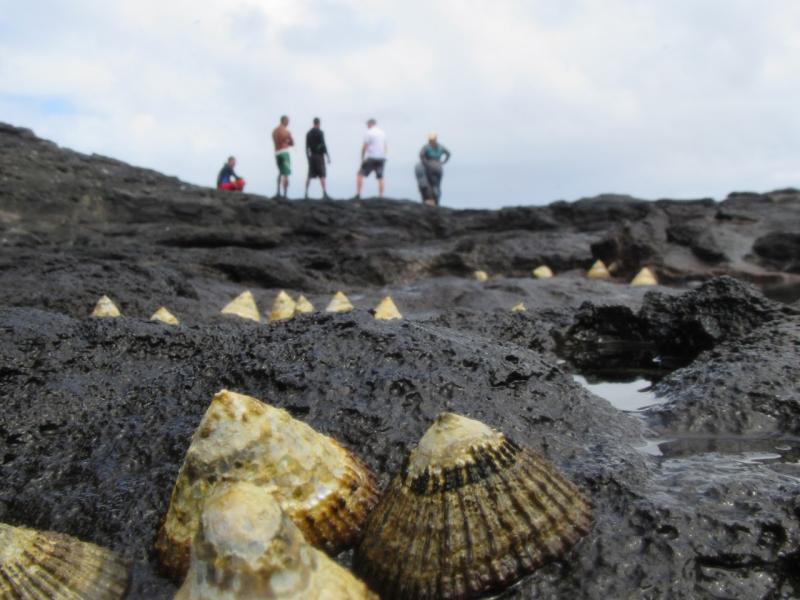The Hawaiian Islands are surrounded by a complex and dynamic marine ecosystem—home to creatures like corals, reef fish, manta rays, and turtles. An environmental backbone to the economy and well-being of its communities, the marine environment and Hawaiian society are linked in various ways. In West Hawai‘i, people dedicated to the region worked together to build a comprehensive understanding of these connections through a series of workshops.
Participants identified the strongest pressures affecting the marine ecosystem, as well as impacts to numerous benefits communities derive from nature. They found that communities rely on a multitude of benefits from the natural environment that support our physical and mental well-being, such as seafood, coastal protection, and cultural value. We often refer to these benefits as “ecosystem services.”

We used input from stakeholders to create a comprehensive understanding of the social-ecological system in West Hawai‘i, diagrammed in this conceptual ecosystem model. Ecosystem services are linked to complex interactions between human pressures such as habitat destruction, and ecological elements such as reef and pelagic fishes. In the model, Drivers (orange boxes) tend to be distal events that create more immediate Pressures (red boxes) which create change within an Ecosystem State Component (green boxes). Changes directly influence Impacted Ecosystem Services (purple boxes).
Stakeholders perceived that fishing, ocean temperatures, nutrient input, and habitat destruction are the ecosystem pressures that have the strongest impact on the marine ecosystem. More than half of the 24 pressures can be managed locally, rather than globally, presenting an opportunity for local management action.

Puʻuhonua o Hōnaunau National Historical Park (Photo credit: Johnny Prehn/Fair Wind Cruises)
Participants also collaborated to identify which ecosystem services would be most vulnerable to changes in the ecosystem. The majority of services that people perceive as vulnerable to ecosystem change are intangible, non-material, and can be difficult to count or quantify (frequently referred to as “cultural” ecosystem services). Examples include spiritual value and connection to place, being able to gather with family and friends, and appreciating the existence or beauty of a place.
It is important to note that resource strategies tend to omit these cultural benefits, perhaps in part because it is difficult to incorporate aspects of the environment that are hard to count or measure. These intangible benefits, however, are critical to human well-being.

Participants determined how heavily ecosystem change would impact each service, represented on the plot by the size of each segment (the center indicates the weakest impact; the perimeter indicates the strongest impact). Participants perceived cultural benefits as the most vulnerable to ecosystem change overall.
This study presents a way to apply ecosystem-based management that is both locally-specific and transferable to other locations. Local resource management could use this research as a basis for assessing ecosystem pressures that stakeholders specifically identified as influential and important. Cultural ecosystem services, which are critical to society yet not often incorporated in management strategy, were perceived by participants as the most vulnerable to ecosystem change. Increasing our understanding of these intangible benefits to communities will be a critical step towards integrating them into resource management.
Read more: “Revealing complex social-ecological interactions through participatory modeling to support ecosystem-based management in Hawai‘i” in Marine Policy.
